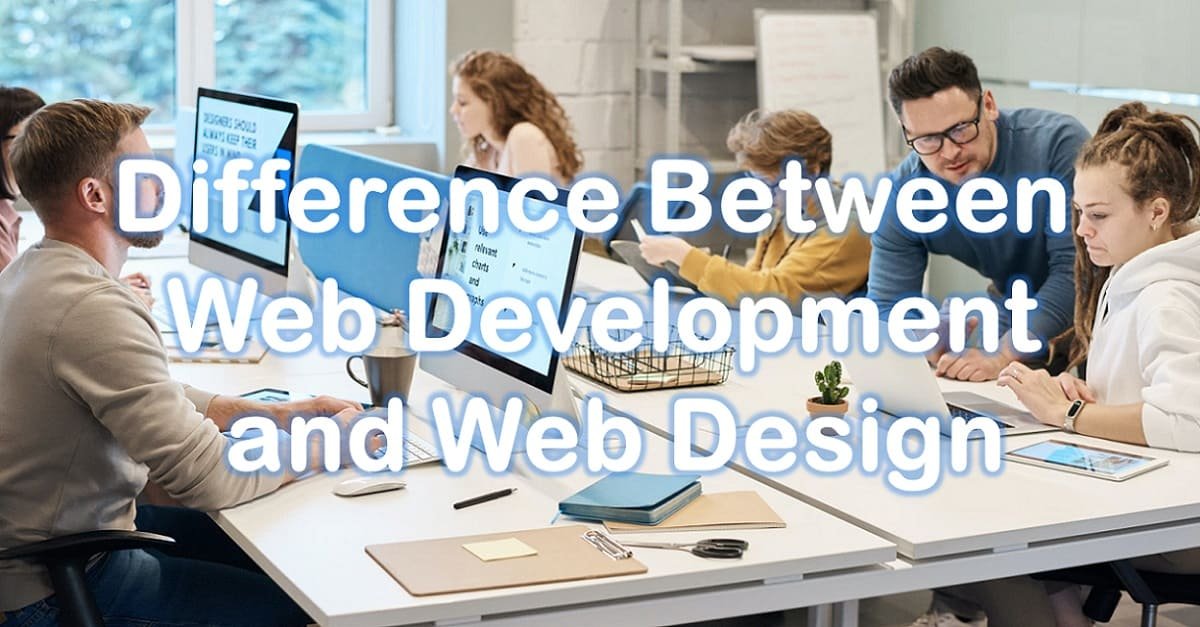
Web design and web development represent two pivotal pillars in the creation of a website, each contributing unique expertise to the process. Despite being linked, their responsibilities differ greatly in terms of focus and approaches. The focus of web design is on the user experience and visual components, creating visually appealing designs and user-friendly interfaces. Web development, on the other hand, goes further into the technical implementation to make sure capabilities work as intended. Comprehending and balancing these disparate aspects is crucial to building a solid and user-focused website.
Web development primarily focuses on the technical aspects of website creation. It include developing, putting into use, and maintaining the features and functions that give a website life. The architects that make sure a website works, performs, and is responsive are called web developers.
Front-End Development: Front-end developers are responsible for the user-facing elements of a website. Their work involves creating the interactive and graphic elements that users interact with directly, using languages such as HTML, CSS, and JavaScript.
Back-End Development: Back-end developers manage Databases, server-side processes, and the general functionality of the website. Their job involves using languages such as Python, Ruby, PHP, or Java to guarantee the smooth functioning of the website's features.
Full-Stack Development: Full-stack developers are capable of managing the whole web development process from beginning to end since they are skilled in both front-end and back-end development.
Web design is fundamentally about paying close attention to how a website looks and feels, as well as how users interact with it. Designers strive for a healthy balance between visually appealing design and user-centered functionality when creating interfaces that go beyond just aesthetics. Their skills encompass facilitating user-friendly navigation, guaranteeing smooth interactions, and creating an atmosphere that not only enthrals but also meets user expectations, ultimately leading to long-term engagement and contentment.
UI (User Interface) Design: UI designers concentrate on the aesthetics and layout of a website. They make ensuring that the visual components of the website—such as the font, colours, and navigation—create a smooth and aesthetically pleasant experience.
UX (User Experience) Design: UX designers focus on optimizing the overall user journey on a website. In order to provide users with an easy-to-use and effective experience, they take into account user behaviours, interactions, and usability.
Web development and web design are fundamentally different in their areas of focus. The visual identity and user experience of a website are carefully crafted by designers, who place a high priority on these aspects. On the other hand, web development goes deeply into the technological foundations, creating the site's functionality and operating framework.
In addition to differences in emphasis, these fields differ in the instruments and approaches they use. Using specialised tools such as Adobe Photoshop, Sketch, and Figma, designers create wireframes and prototypes that help visualise the look and feel of websites. On the other hand, programmers use a variety of languages, including HTML, CSS, JavaScript, Python, Ruby, and PHP, to create the framework and operational details of websites. This tool differentiation highlights their unique contributions to forming the whole field of website development.
In conclusion, there are two different parts of creating a website: web development and web design. Although both are necessary for creating a great website, their methods and areas of emphasis are different. While web developers are in charge of developing a website's functioning, web designers are in charge of designing its appearance and feel. You may comprehend the intricacy of creating a website and the significance of each position in the process more fully if you are aware of the distinctions between web design and web development.
Comments